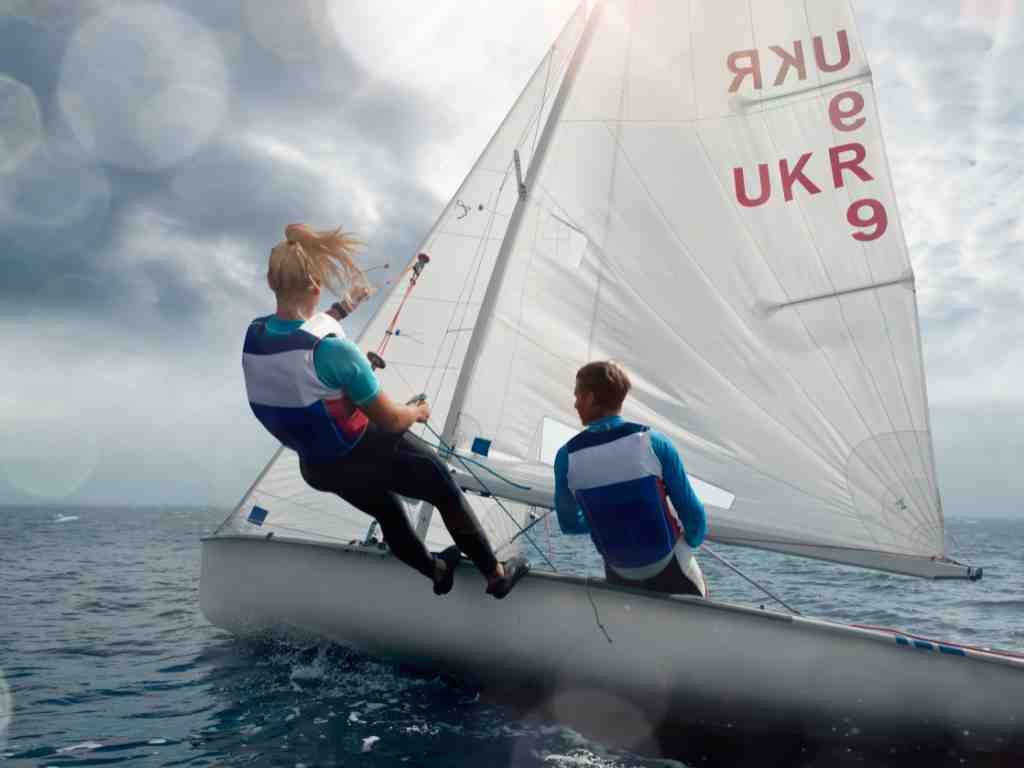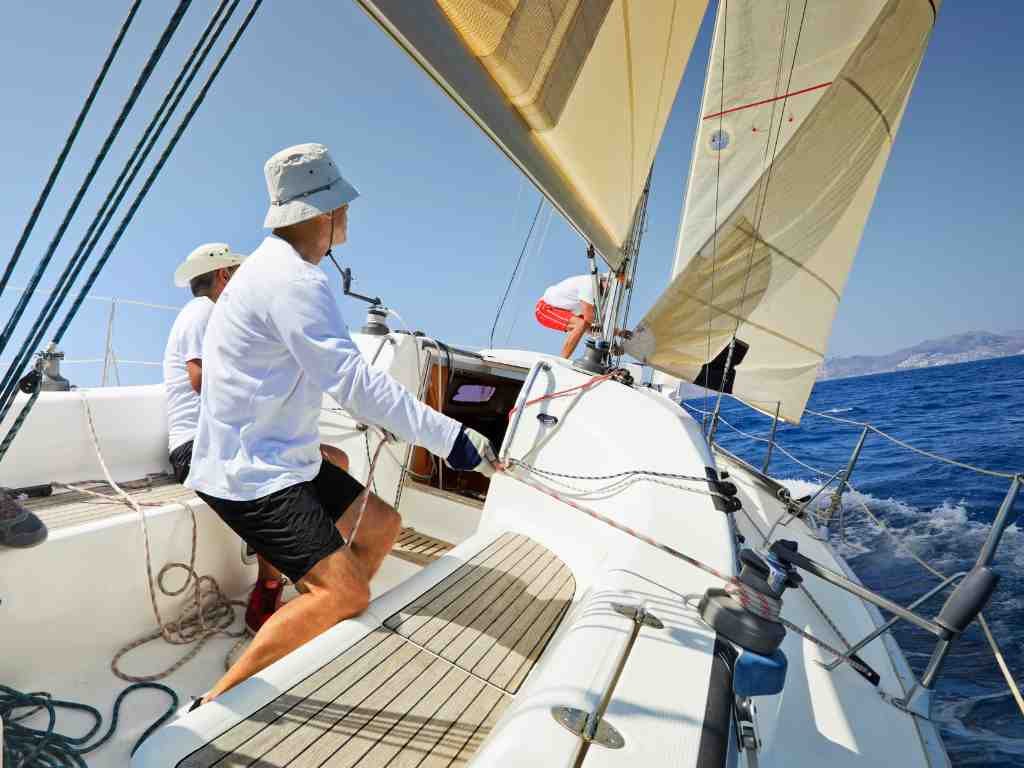
Sailing is both an art and a science, relying on the harmonious interplay between wind, water, and the sailboat itself. To embark on this journey, it is essential to grasp the fundamental concepts of sailing that will serve as the foundation for any enthusiast. There are several types of sailboats, ranging from small dinghies to larger yachts, each designed for specific sailing conditions and purposes. Understanding the differences among these vessels is crucial for selecting the right sailboat based on individual preferences and intended sailing experiences.
Basic sailing terminology is an integral component of mastering the craft. This lexicon includes terms such as ‘port’ and ‘starboard’ to describe the left and right sides of the boat, respectively. Familiarizing oneself with terms like ‘bow’ (the front of the boat) and ‘stern’ (the rear) is equally important. Additionally, sailors must know how to operate various equipment, including the mainsail and jib, which are the two primary sails found on most sailboats. Each component plays a critical role in harnessing wind energy to propel the vessel forward.
The principles of how a sailboat moves through water are primarily rooted in the interaction between wind direction and the sail’s shape. When wind fills the sails, it creates lift, similar to how an airplane wing functions. Understanding the significance of wind direction allows sailors to make strategic decisions about their course and sail adjustment. Moreover, being aware of water currents is vital, as they can influence the boat’s path and speed. Integrating this knowledge contributes to a more enjoyable and efficient sailing experience, empowering beginners to explore the open waters with confidence.
Essential Equipment and Gear for Beginners
- U.S. COAST GUARD APPROVED: This USCG-approved Inflatable Life Jacket inflates automatically upon water immersion or manually pulling the inflation handle. Includes a back-up oral inflation tube. Appro…
- HIGHLY BUOYANT: Provides 22.5 pounds of buoyancy when fully inflated, keeping you safe and afloat. Its buoyant material offers the necessary support to keep your head above water, providing peace of m…
- MANUAL INFLATION OPTION: Easily converts to MANUAL ONLY inflation mode when paddling, fly-fishing, or other activities where there is good chance you may get wet or end up in the water. Simply pull th…
For individuals embarking on the journey of sailing, acquiring the necessary equipment and gear is fundamental to ensure a safe and enjoyable experience on the water. Among the most critical items to consider is a Personal Flotation Device (PFD), which is a mandatory safety requirement and is designed to keep a sailor afloat in the event of an emergency. Beginners should ensure that their PFD fits well and complies with local regulations to guarantee optimum safety.

Additionally, appropriate sailing attire is essential. Sailors should invest in moisture-wicking and quick-drying clothing, along with a waterproof jacket and trousers, to protect against the elements. Footwear should be non-slip and suitable for wet conditions. It is equally important to protect oneself from the sun; therefore, a wide-brimmed hat and sunglasses with UV protection are advisable to mitigate the risk of sunburn during long days on the water.
Safety equipment is another vital aspect of sailing gear. Beginners need to equip their sailboat with essentials such as a first aid kit, fire extinguisher, and distress signaling devices, including flares and a whistle. Moreover, having a well-functioning bilge pump is crucial for the removal of any water that may enter the boat.
- Flow Rate (GPH): 1100GPH; Volt: 12V; Current(A): 3.8A; Head(M): 3.0M, Connect 1-1/8″ Hose.
- Wire Lead(M): 1m; Outlet Diameter: 29mm/ 1.14 Inch (1-1/8″); Width: Approx. 81mm
- Built-in float switch! (No separate float switch is needed)
Furthermore, basic navigational tools are indispensable for any sailor. A compass, charts, and a GPS device not only assist in navigation but also enhance the overall sailing experience. When choosing a sailboat, it is essential to consider factors such as size and type, alongside personal needs and safety considerations. Beginners should opt for a stable and manageable vessel, ideally a small keelboat or catamaran, to facilitate learning while ensuring safety.
Learning Sail Handling and Techniques
Mastering the art of sail handling is essential for anyone looking to venture into sailing. This pivotal skill not only enhances your overall sailing experience but also ensures safety on the water. To begin, understanding how to rig the sails is fundamental. Rigging involves setting up the sailboat’s various components, including the main sail and jib, to prepare for sailing. Familiarizing yourself with each part of the sail and its function can significantly influence your capability to manage the craft effectively.
Once your sails are rigged, the next step is to learn basic sailing maneuvers, specifically tacking and jibing. Tacking refers to turning the bow of the boat through the wind, while jibing consists of turning the stern through the wind. Practicing these maneuvers in a controlled environment, such as a calm lake or with expert supervision, can enhance your confidence and skill level. Understanding the wind’s direction and how to adjust the sails appropriately during these maneuvers is critical for optimal sailing performance.
Another vital technique is anchoring, which is essential for maintaining stability when the vessel is stationary. To anchor effectively, select an appropriate anchor type for your specific situation and learn how to properly set it based on the depth and type of seabed. Ensuring that the anchor is well set can prevent unexpected drifting, particularly during adverse weather conditions.
For beginners, it is highly recommended to join sailing courses or local clubs. These platforms provide hands-on experience under the guidance of experienced sailors, which can greatly enhance learning. Engaging in practical training, coupled with theoretical knowledge, will refine your sail handling skills and empower you to navigate the waters confidently.
Safety Tips and Best Practices on the Water
Sailing can be an exhilarating experience, but safety should always be the paramount concern for any sailor. One of the first steps before setting sail is to check the weather conditions. Understanding the forecast helps to avoid unexpected storms or adverse weather changes that could jeopardize safety. Utilize reliable weather apps or local maritime forecasts to get real-time updates. Conditions can change rapidly, so having the latest information is crucial.

Understanding the basic navigational rules is another vital aspect of sailing safely. Familiarize yourself with the International Regulations for Preventing Collisions at Sea (COLREGS). These rules dictate the right-of-way, which is essential for avoiding accidents with other vessels. Additionally, learning the markers and buoys in your sailing area can enhance navigational awareness and support safe travel.
Creating a float plan is a best practice that can significantly improve safety while on the water. A float plan includes details about your sailing route, anticipated return time, and crew members aboard. This document should be shared with a trusted friend or family member onshore who can alert authorities if you do not return as planned. Effective communication is paramount while sailing, especially when dealing with your crew and any other vessels in the area. Utilize VHF radios for clear communication, particularly in crowded waters or when emergencies arise.
Lastly, prepare for emergencies by equipping your boat with essential safety gear such as life jackets, first aid kits, and flares. Conduct regular safety drills with your crew, ensuring everyone understands their roles in case of an emergency. Practicing safety measures can be the difference between a memorable sailing experience and a tragic accident. By following these safety tips and best practices, you can ensure a safe and enjoyable time on the water, allowing you to focus on the joys of sailing.






